
How to Use Adafruit MatrixPortal M4: Examples, Pinouts, and Specs
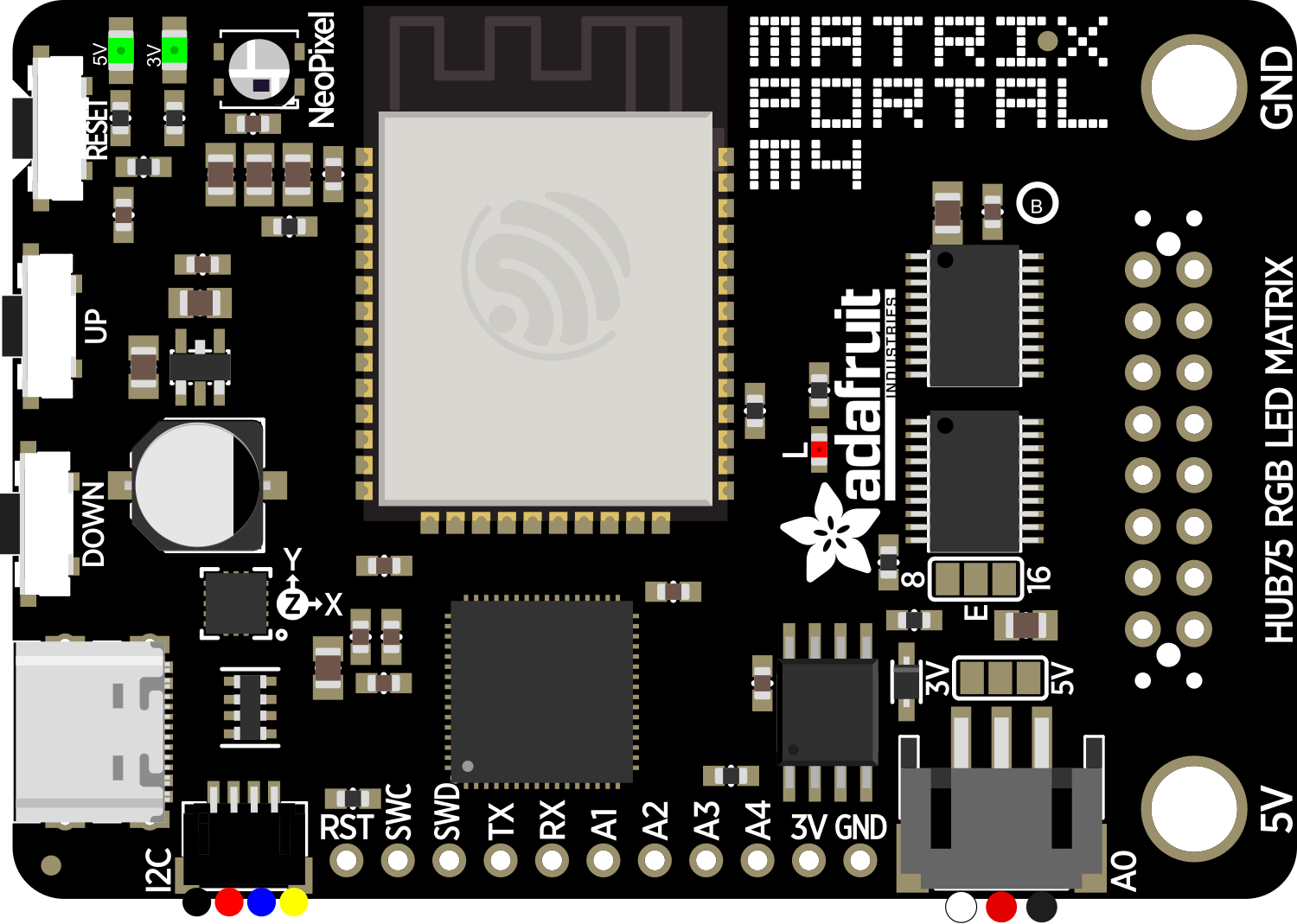
 Design with Adafruit MatrixPortal M4 in Cirkit Designer
Design with Adafruit MatrixPortal M4 in Cirkit DesignerIntroduction
The Adafruit MatrixPortal M4 is a versatile and powerful development board designed for driving RGB LED matrices. It is built around the high-performance SAMD51 microcontroller and is perfect for creating eye-catching displays, interactive art installations, and advanced Internet of Things (IoT) projects. With its onboard connectivity and ease of use, the MatrixPortal M4 is an ideal choice for hobbyists, educators, and professionals looking to bring their LED matrix projects to life.
Explore Projects Built with Adafruit MatrixPortal M4
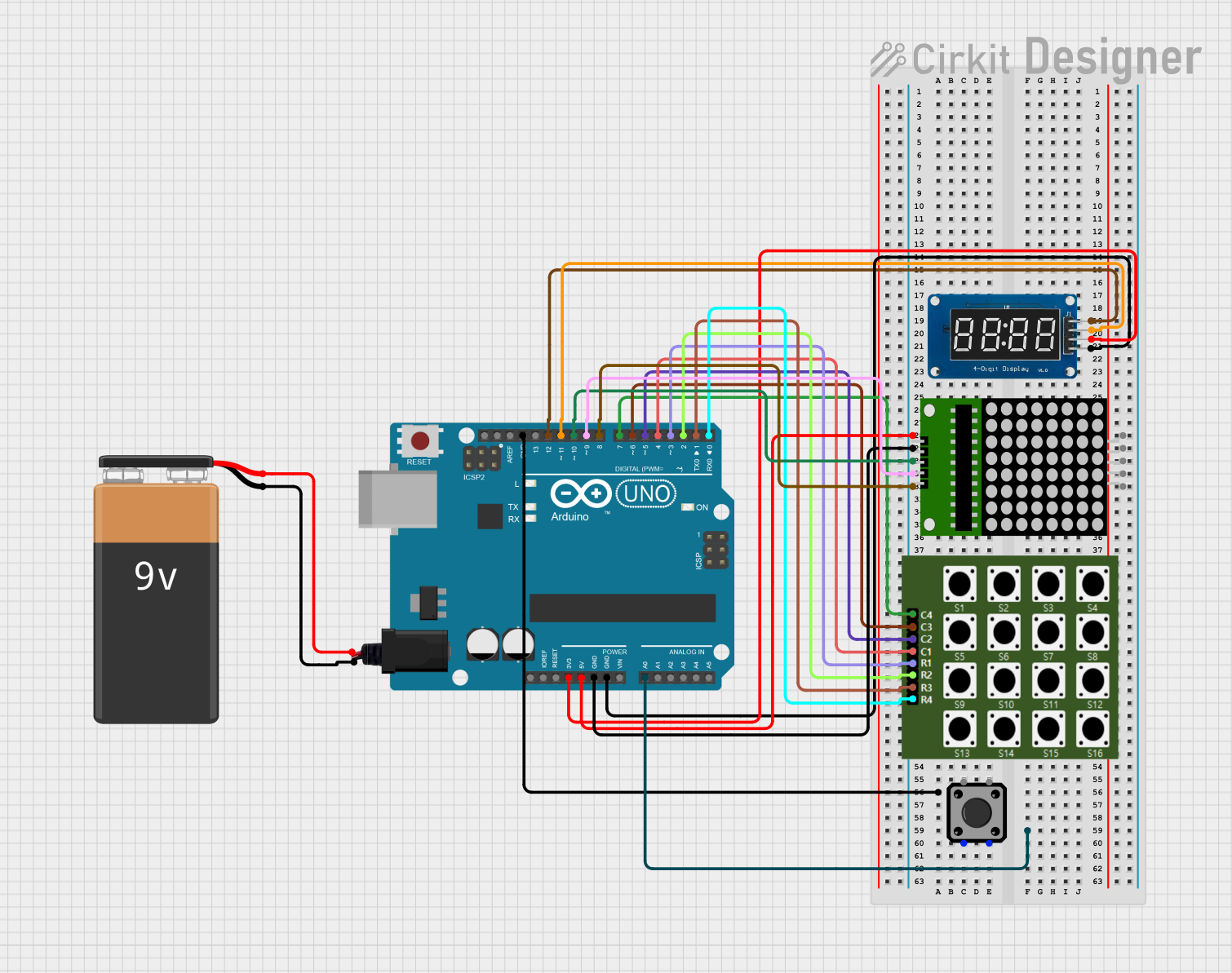
 Open Project in Cirkit Designer
Open Project in Cirkit Designer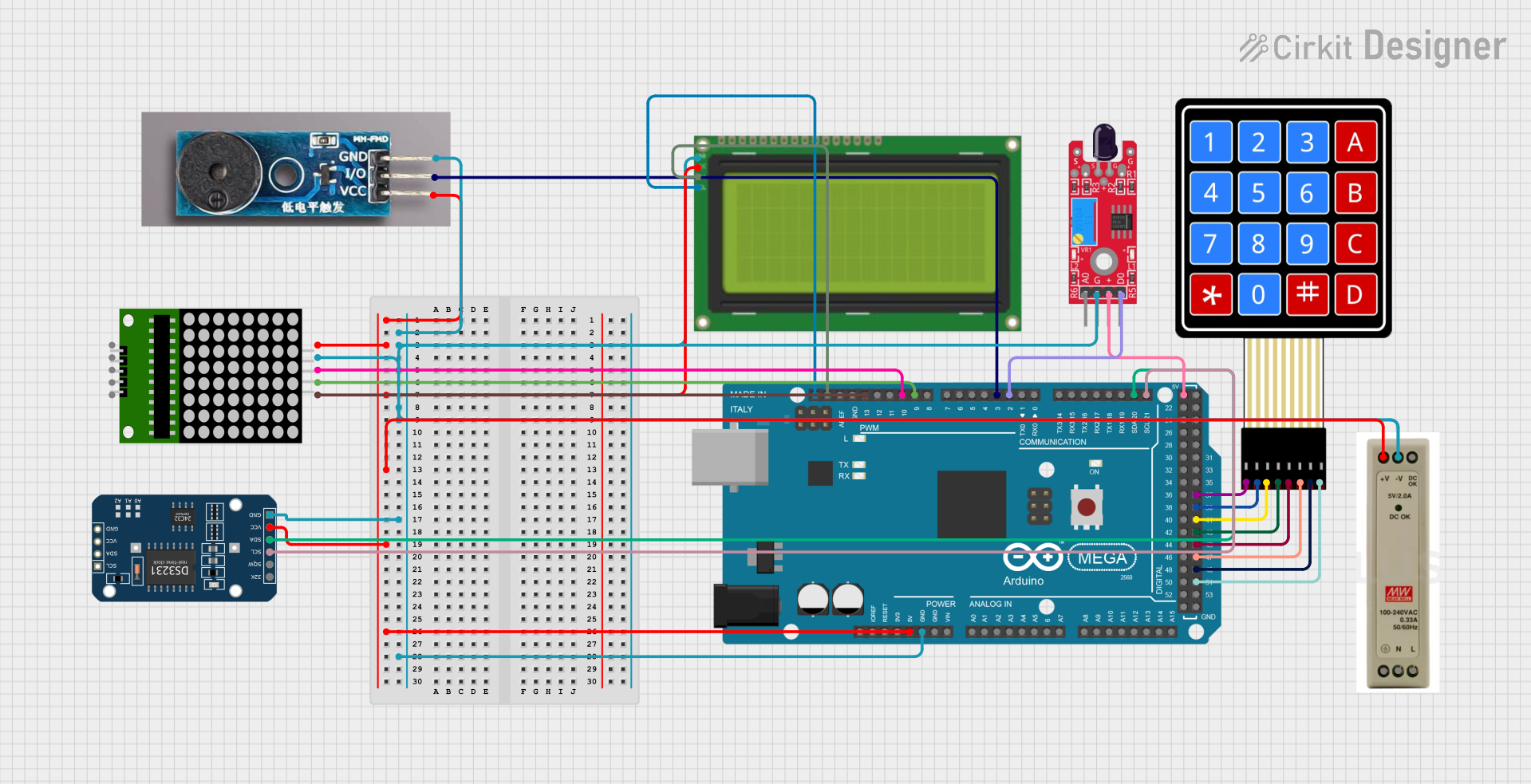
 Open Project in Cirkit Designer
Open Project in Cirkit Designer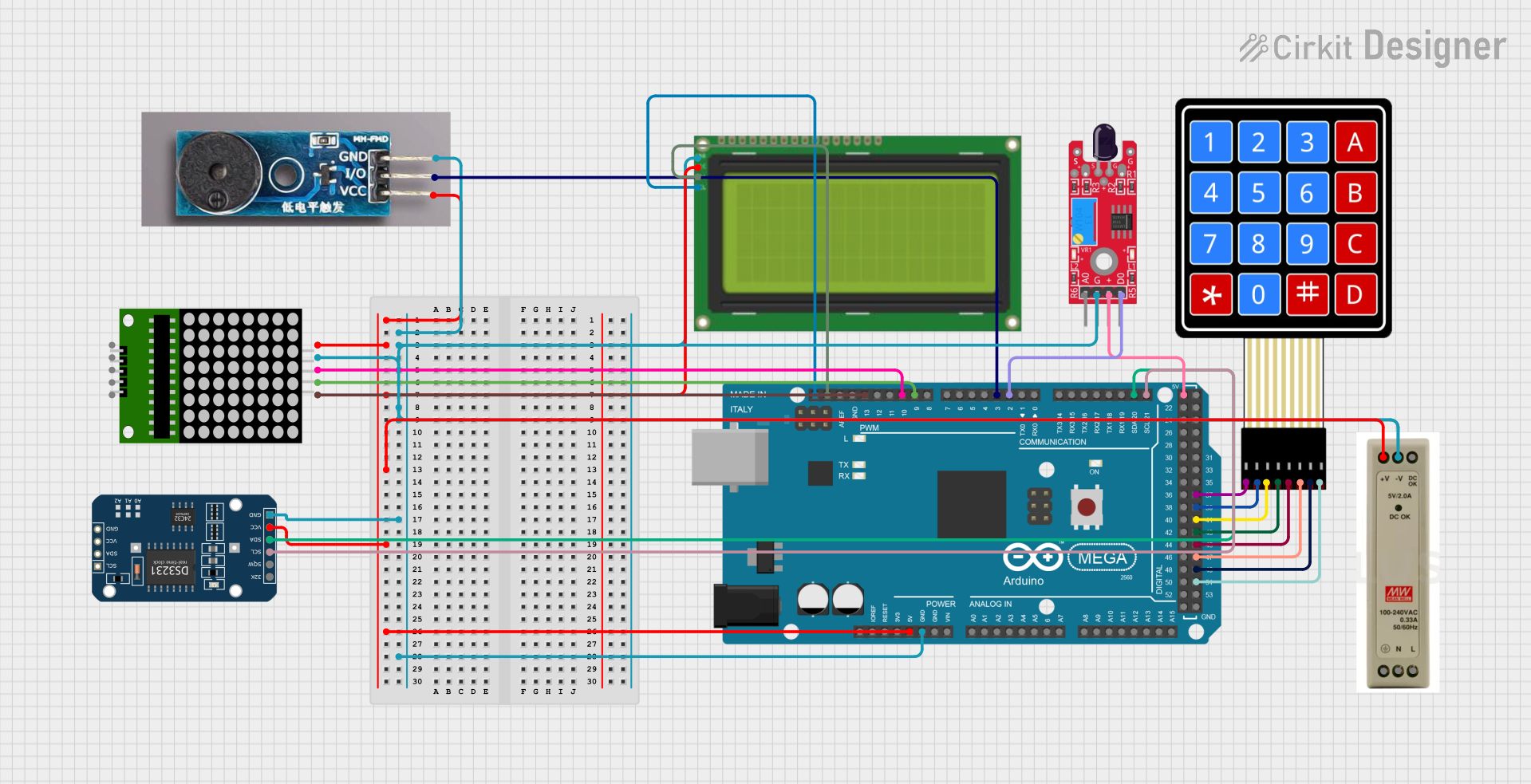
 Open Project in Cirkit Designer
Open Project in Cirkit Designer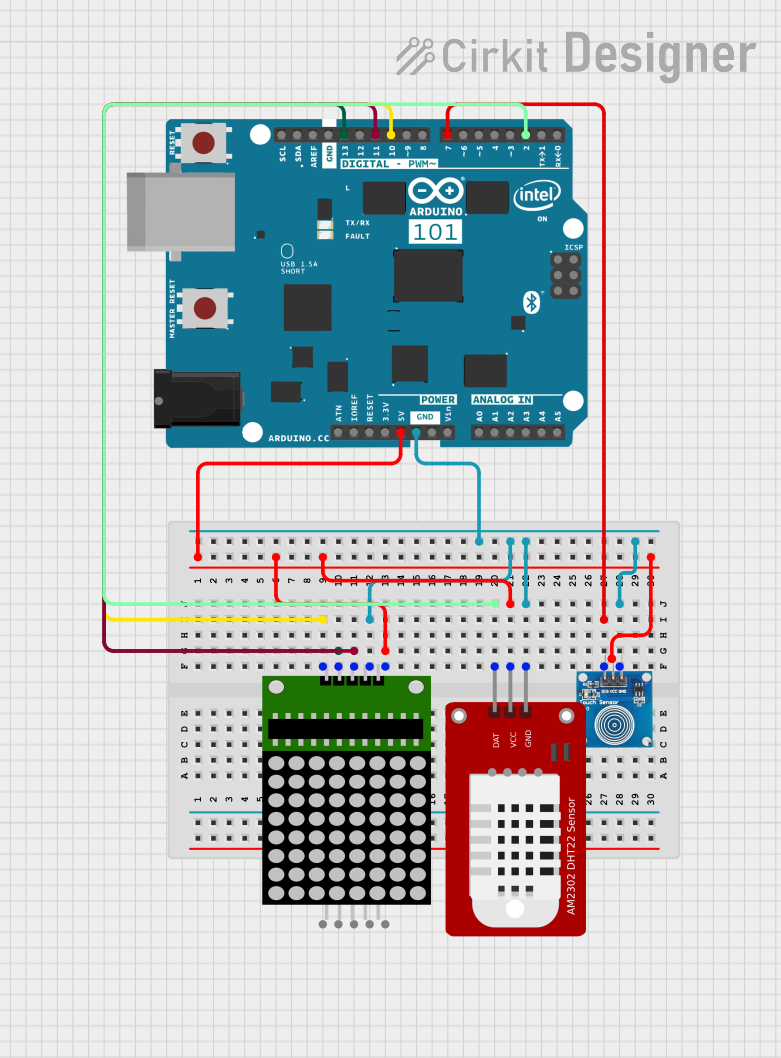
 Open Project in Cirkit Designer
Open Project in Cirkit DesignerExplore Projects Built with Adafruit MatrixPortal M4

 Open Project in Cirkit Designer
Open Project in Cirkit Designer
 Open Project in Cirkit Designer
Open Project in Cirkit Designer
 Open Project in Cirkit Designer
Open Project in Cirkit Designer
 Open Project in Cirkit Designer
Open Project in Cirkit DesignerCommon Applications and Use Cases
- Digital signage and message boards
- Interactive art installations
- Data visualization displays
- Gaming and entertainment systems
- Educational tools for teaching programming and electronics
- Custom clocks and timers
- IoT devices with visual feedback
Technical Specifications
Key Technical Details
- Microcontroller: ATSAMD51J19
- Clock Speed: 120 MHz
- Flash Memory: 512 KB
- RAM: 192 KB
- Input Voltage (VIN): 4.5V to 6.0V
- Logic Level: 3.3V
- Connectivity: Wi-Fi (ESP32-S0WD), USB-C
Pin Configuration and Descriptions
| Pin Number | Name | Description |
|---|---|---|
| 1 | GND | Ground |
| 2 | VBUS | USB input voltage (5V) |
| 3 | EN | Enable; can be cut to disable auto-reset |
| ... | ... | ... |
| n | IO36 | General purpose I/O pin |
Note: This is a partial list. Refer to the official datasheet for the full pinout.
Usage Instructions
How to Use the Component in a Circuit
- Powering the MatrixPortal M4: Connect a 5V power supply to the VIN and GND pins, or power the board via the USB-C port.
- Connecting to an LED Matrix: Use the onboard connectors to attach a compatible RGB LED matrix. Ensure the matrix's voltage and current requirements are compatible with the MatrixPortal M4.
- Programming the Board: The MatrixPortal M4 can be programmed using the Arduino IDE or CircuitPython. Select the appropriate board and port before uploading your code.
Important Considerations and Best Practices
- Always disconnect the power source before making or altering connections.
- Verify the orientation of the LED matrix connector before attaching it to the board.
- Use a sufficient power supply to handle the current draw of the LED matrix, especially for larger displays.
- Consider using a level shifter if you need to interface with other components that operate at different logic levels.
Troubleshooting and FAQs
Common Issues Users Might Face
- LED Matrix Not Lighting Up: Check the power supply and connections. Ensure the code is correctly uploaded and running.
- Flickering or Incorrect Colors: This may indicate a timing issue or insufficient power. Verify the power supply and refresh rate settings in your code.
- Board Not Recognized by Computer: Ensure the USB cable is fully inserted and functional. Try a different USB port or cable if necessary.
Solutions and Tips for Troubleshooting
- Double-check all connections for solid contact and correct orientation.
- Use the serial monitor to debug and check for error messages or output.
- Update to the latest firmware and libraries to ensure compatibility and fix known issues.
FAQs
Q: Can I chain multiple LED matrices together? A: Yes, the MatrixPortal M4 supports chaining of compatible LED matrices. Ensure your power supply can handle the increased current draw.
Q: What programming languages can I use with the MatrixPortal M4? A: The board supports programming with Arduino (C/C++) and CircuitPython.
Q: How do I update the firmware on the ESP32 module? A: Follow the instructions provided by Adafruit for updating the ESP32 firmware using the provided utility.
Example Code for Arduino UNO
Below is a simple example code snippet that demonstrates how to light up an LED on the matrix. This code is for illustrative purposes and assumes you have the necessary libraries installed.
#include <Adafruit_GFX.h> // Core graphics library
#include <Adafruit_LEDBackpack.h>
Adafruit_BicolorMatrix matrix = Adafruit_BicolorMatrix();
void setup() {
matrix.begin(0x70); // Start the LED matrix using the I2C address
}
void loop() {
matrix.clear(); // Clear the matrix display
matrix.drawPixel(0, 0, LED_GREEN); // Light up one LED in the top-left corner
matrix.writeDisplay(); // Update the display with the new LED state
delay(500);
matrix.clear(); // Clear the display again
matrix.writeDisplay(); // Update to show the cleared state
delay(500);
}
Note: This code is for demonstration purposes and may require modifications to work with your specific hardware setup. Always refer to the official Adafruit libraries and documentation for the MatrixPortal M4 for the most accurate and up-to-date information.